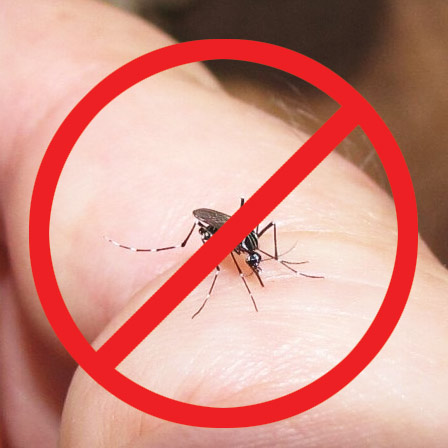In the News

Washington, US – The Pan American Health Organization (PAHO) has called for countries in Latin America and the Caribbean to prepare for a timely response to possible outbreaks of dengue.
The disease is endemic in the region and, since its reintroduction in the 1980s, has caused cyclical outbreaks and epidemics every three to five years.The first dengue epidemic with over one million cases occurred in the Americas in 2010. Three years later, in 2013, the first epidemic with more than two million cases occurred. At the beginning of 2019, there was an increase in cases compared to the same period of 2018, PAHO said.
“Dengue is a viral infection transmitted by mosquitoes that is widespread in the Americas,” said Dr Marcos Espinal, Director of the Department of Communicable Diseases and Environmental Determinants of Health. “Its complexity has been increasing over the years due to several factors such as unplanned urban growth, water and sanitation problems, climate change, and, in some countries, the simultaneous circulation of all four types of dengue, which increases the risk of serious cases and outbreaks.”
According to PAHO’s latest epidemiological update on dengue, published on February 22, 560,586 cases of dengue were reported in the Americas last year, including 3535 severe cases of dengue and 336 deaths. During the first six weeks of 2019, almost 100,000 cases of dengue were reported, including 632 cases of severe dengue and 28 deaths.
The main recommendations from PAHO focus on countries intensifying disease surveillance, as well as vector control measures to reduce mosquito populations that transmit the disease. Currently, the only way to control or prevent the transmission of the virus is the fight against Aedes aegypti, the main mosquito vector.
PAHO also recommends continuing to educate the population, as well as community involvement initiatives. PAHO also requests that countries ensure that health professionals are trained in the diagnosis of dengue and other arboviruses, as well as in the adequate management of patients with these diseases. PAHO provides technical cooperation to prevent and control the disease.
Dr Espinal explained that the timely diagnosis of the disease has become more complex with the arrival of two new arboviruses: the Chikungunya virus in 2013 and the Zika virus in 2015, which present similar symptomatology. However, despite the introduction of these new arboviruses, dengue is the one that presents the highest number of diseases.
Dengue is also a more lethal arbovirus than chikungunya and Zika, but its treatment is relatively simple, inexpensive and very effective in saving lives, PAHO noted.
“The key is recognizing the warning signs early and providing the care required to prevent it progressing to more serious forms,” said José Luis San Martin, PAHO’s regional advisor on dengue.
If a physician is not sure whether a patient is presenting with dengue, Chikungunya or Zika, PAHO recommends that the clinical management and treatment of dengue begin immediately, without waiting for a laboratory diagnosis. PAHO also recommends that the patient be monitored daily or at least every 48 hours in order to pick up on any serious warning signs, particularly during the critical phase of the disease.
ocean-cleaning device
An innovation out of the CMU’s recently established Centre for Blue Economy and Innovation, the device is designed to collect debris from the sea.
“It is a reinforced household bin; a floating device, which is attached to a dock or jetty in the sea around the CMU,” explained Vice President of Global Affairs and Executive Director of the Blue Economy centre, Ambassador Joachim Schmillen. “In our case, we are using an air pump and PVC pipes to produce a suction effect, so that every piece of floating debris…around the waste bin will be sucked in.”
The bin is partially submerged and contains a mesh to catch debris, which can then be emptied once full.
On February 22, in a test of the efficacy of the air pump to produce sufficient eddy to pull water into the bin, the Jambin prototype caught its first piece of debris.
Ambassador Schmillen said that on that day, there were very harsh wind conditions and high waves around the CMU and in the marina (Royal Jamaica Yacht Club) “but the prototype sucked in the debris against the conditions”.
“The challenge of wind and waves is not so difficult. It is not a technical problem in itself; it is because of the resistance level of the material. The biggest challenge we have at the moment is finding the material that can, for a long time, withstand the harsh conditions of the sea. We would like to use material like fibreglass to construct a more resistant waste bin,” he said.
The Jambin technology was adapted from the ‘Seabin’ invented in New Zealand to remove debris, particularly plastic bottles, from the sea. Ambassador Schmillen said that the local innovation goes further. “The original ‘Seabin’ uses a water pump, but we are using an air pump because we would also like to use Jambin in our oyster project later. The air pump is producing something called nanobubbles, which are enriching the water around it with oxygen, and this stimulates sea life,” he explained.
More than 30,000 oysters will be used to clean and improve the water quality of the Kingston Harbour under a pilot project being undertaken by the CMU Centre.
Oysters are natural purifiers and a single adult oyster can cleanse about 50 gallons of water per day. Since 2014, oysters have been employed to rebuild oyster reefs in the waters surrounding New York City.

To advertise in ICW call
Call 905-738-5005